One spring morning in 2016, I discovered a hidden gem on the quiet Rue de Braque in the 3rd arrondissement.
Until then, I thought there were only three major half-timbered houses in Paris.
This beautifully preserved house stands tucked away from the busy streets, offering a glimpse into the city’s pre-Haussmannian past.
It felt like stepping back in time to when timbered façades were common across Paris.
Discovering this rare piece of history was a reminder that Paris still holds surprises, revealing traces of its medieval charm when you least expect it.
Half-Timbered Houses in Central Paris
To my knowledge, there are three principal half-timbered dwellings in Paris, all of them situated in the 3rd and 4th arrondissements:
Rue François Miron (numbers 11&13):
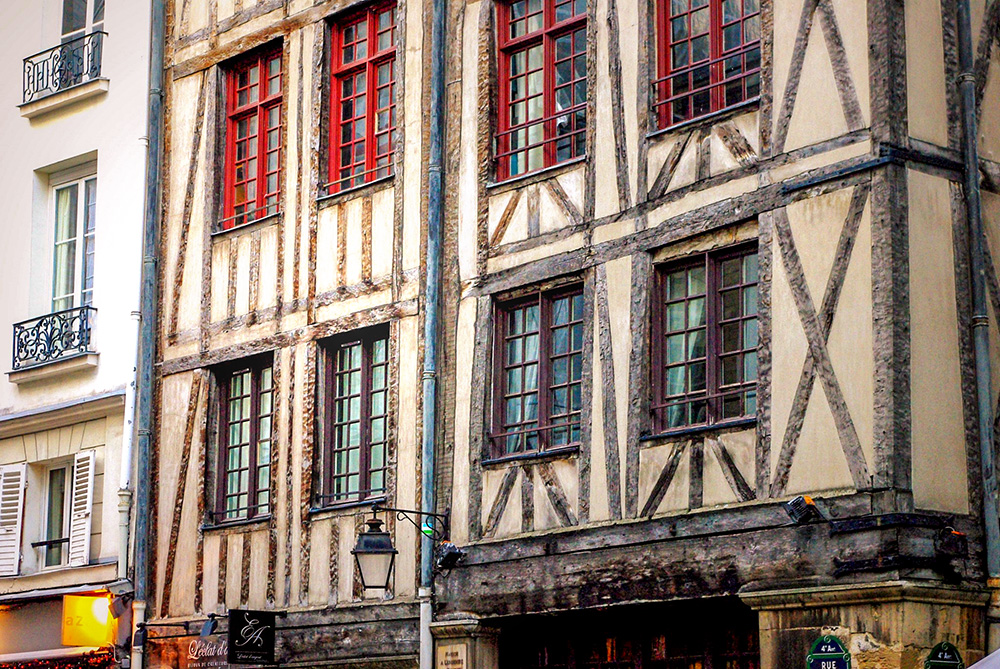
Rue des Barres (number 12):
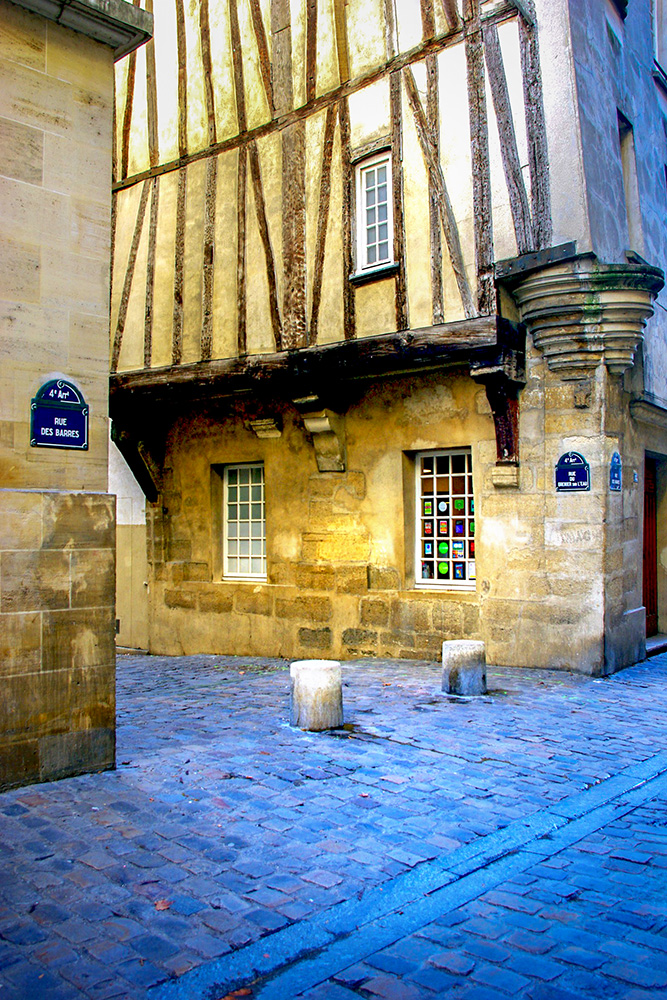
And Rue Volta (number 3):
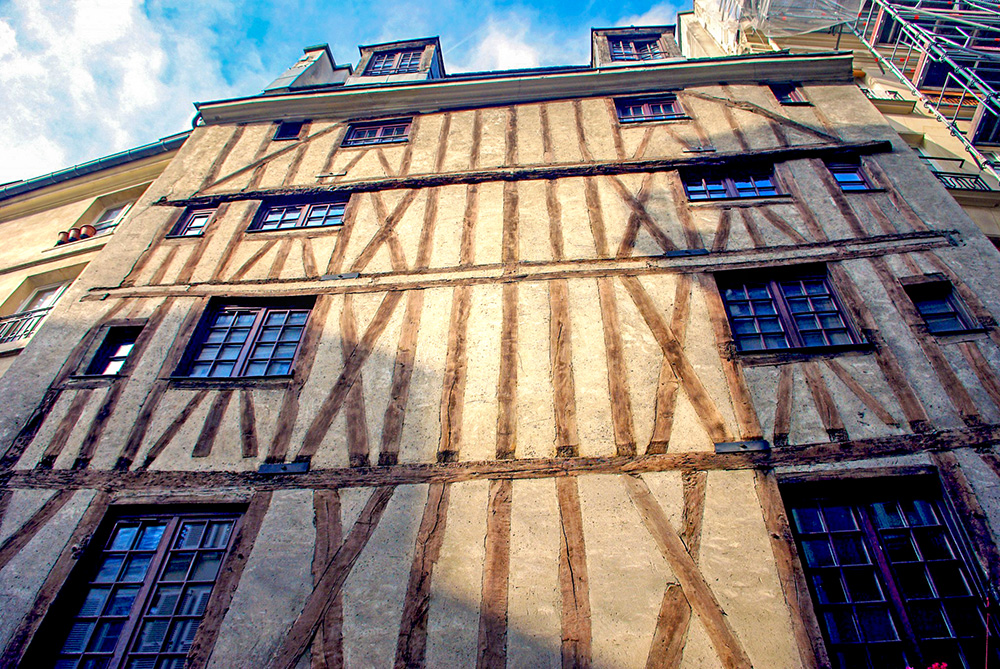
A Hidden Gem in the Rue de Braque
On a crisp spring morning in March 2016, I found myself wandering through the Marais, heading towards the historic Place des Vosges.
My stroll took me down the quiet Rue de Braque, where I happened to glance at the door of number 5.
To my surprise, it was open, revealing a peaceful inner courtyard.
Curious, I stepped closer, and there it was—a stunning half-timbered building tucked away from view.
A house dating back to the 17th century
This hidden gem dates back to the 17th century.
Originally, timbered houses were prohibited, so builders often concealed them behind courtyards, out of public sight.
Number 5 is one such example, originally covered with plaster to avoid detection.
However, a recent restoration has revealed the magnificent timber structure of the corps de logis, showcasing the craftsmanship of a bygone era.
Restricted access!
Despite its beauty, this property remains privately owned, with access strictly limited.
Visitors can only catch a glimpse if the courtyard gate happens to be open.
It’s this exclusivity that makes the house all the more intriguing.
For those seeking to explore Paris beyond the well-trodden paths, this discovery offers a rare glimpse into the city’s hidden architectural treasures—remnants of a time long before Haussmann reshaped the skyline.
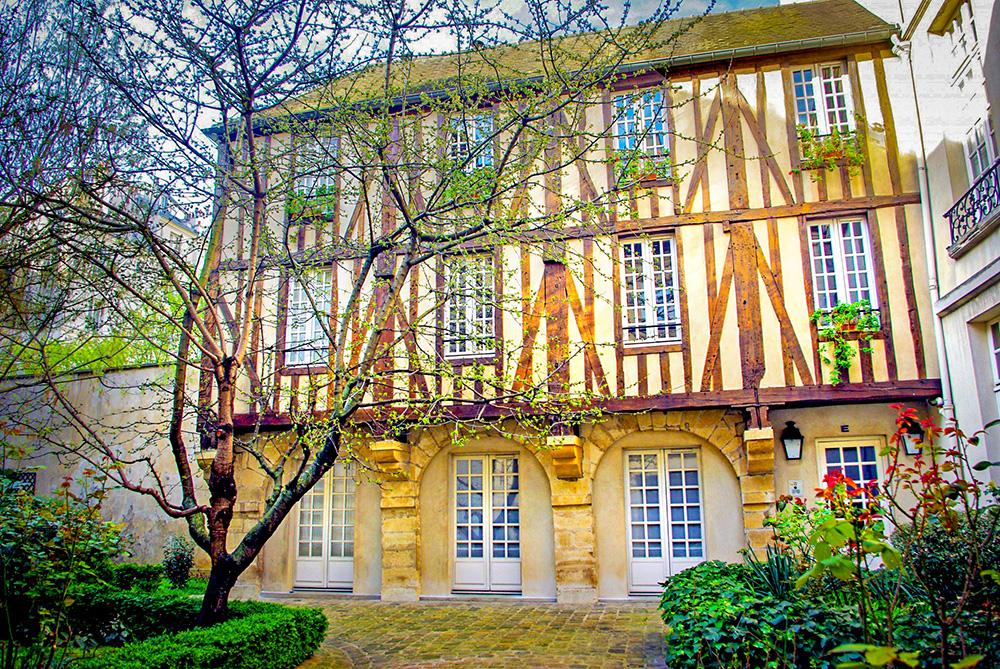
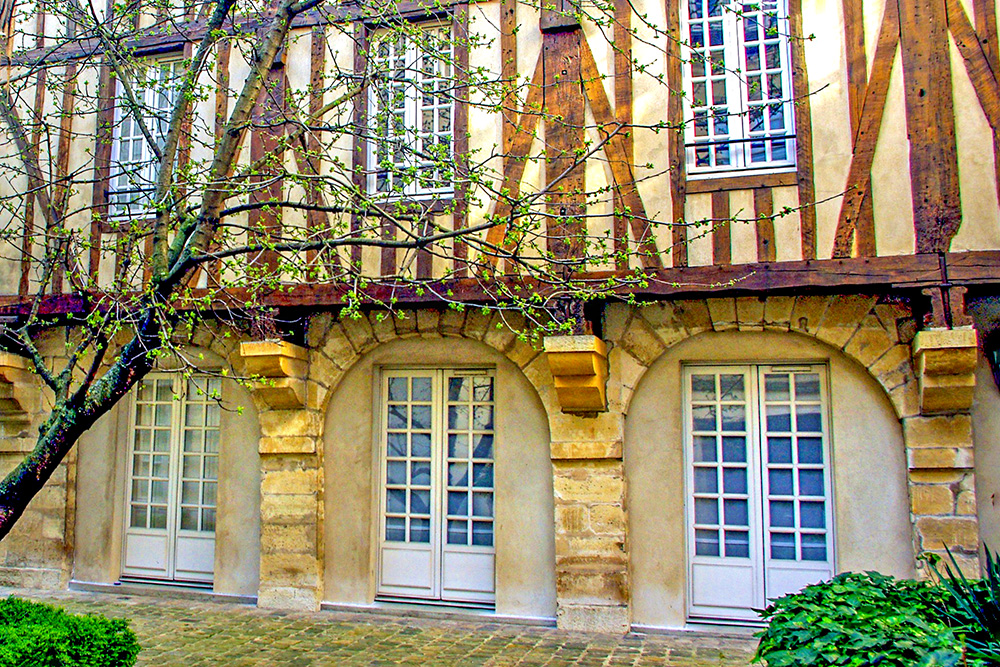
There are probably a few other buildings of that kind in the Marais that are not accessible to the public.
Do you know some of them? Then, leave a message below!
If you try to glimpse this timber-framed building but are unsuccessful, you can look no further than the oldest house in Paris, just a few streets away in the Rue de Montmorency.
Discover more of the 3rd arrondissement!
Check out the main places of interest in Paris’ 3rd arrondissement:
- A little guide to the 3rd arrondissement
- the Place des Vosges
- the Place de la République
- the Hôtel Carnavalet (also a museum dedicated to the history of Paris, see below)
- the Hôtel de Soubise (National Archives) with the medieval-looking Porte de Clisson (rue des Archives)
- the Hôtel de Rohan (National Archives)
- the Square du Temple and City-Hall of the 3rd arrt.
- the Nicolas Flamel House, believed to be Paris’ oldest stone house
- the House of Jean Hérouet, a Gothic mansion
- the half-timbered house at 3 rue Volta
- the picturesque market of Marché des Enfants Rouges
- the unusual métro station of Arts et Métiers based on steam power with a hint of science fiction
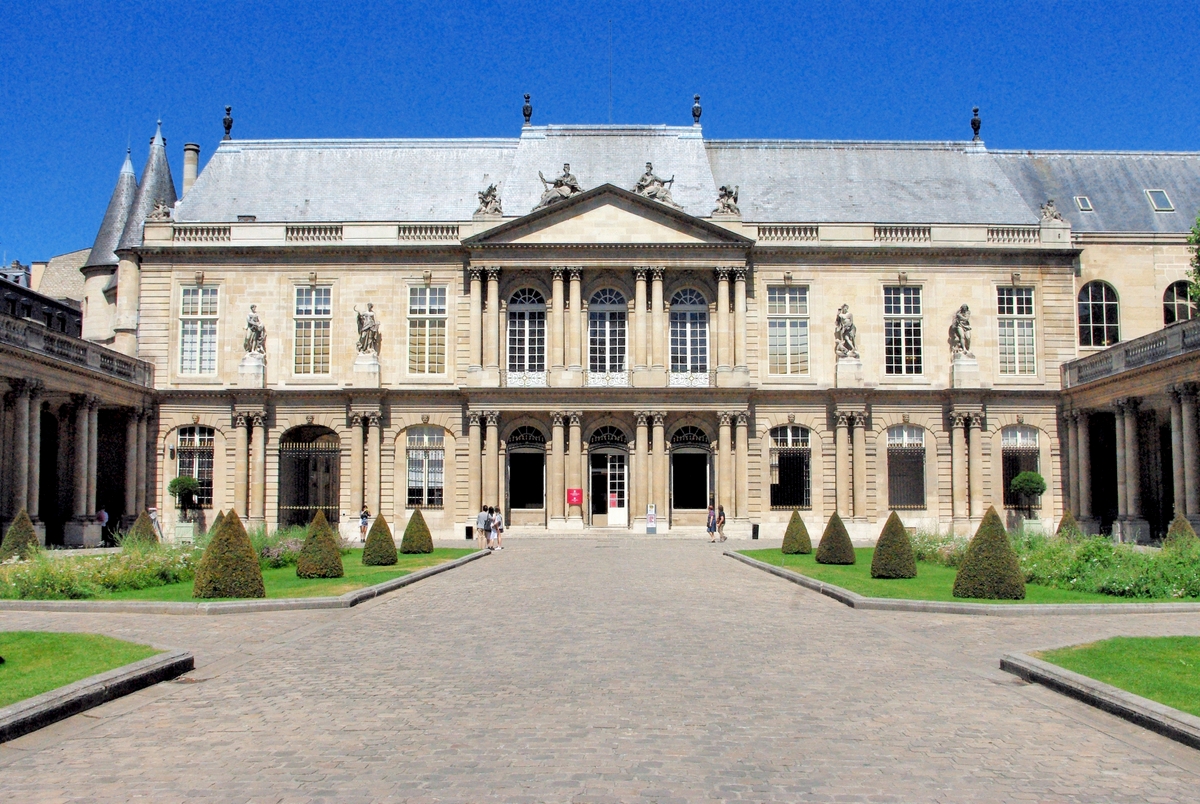
Where to stay in the 3rd arrondissement?
Hotels in Paris vary from stunning luxurious places like the Ritz and the Meurice to much simpler hotels in charming older parts of the city.
However, due to its central location, the prices of all types of accommodation in the 3rd art are quite high.
Depending on your budget, you might want to find cheaper accommodation further away from the hypercentre of Paris!
Here is a map showing the nearest accommodation:
Pin it for later!





Pierre, I’m going to find these houses on my next trip. Why were timbered houses not accepted?
I hope you’ll find them easy to find! Half-timbering wasn’t appreciated because it could cause fires, hence the royal decree banning it from Paris.
Ah, merci. That makes sense. I’ll find them (and I hope the door on rue de Braque is open when I’m there!). I loved the article, by the way!